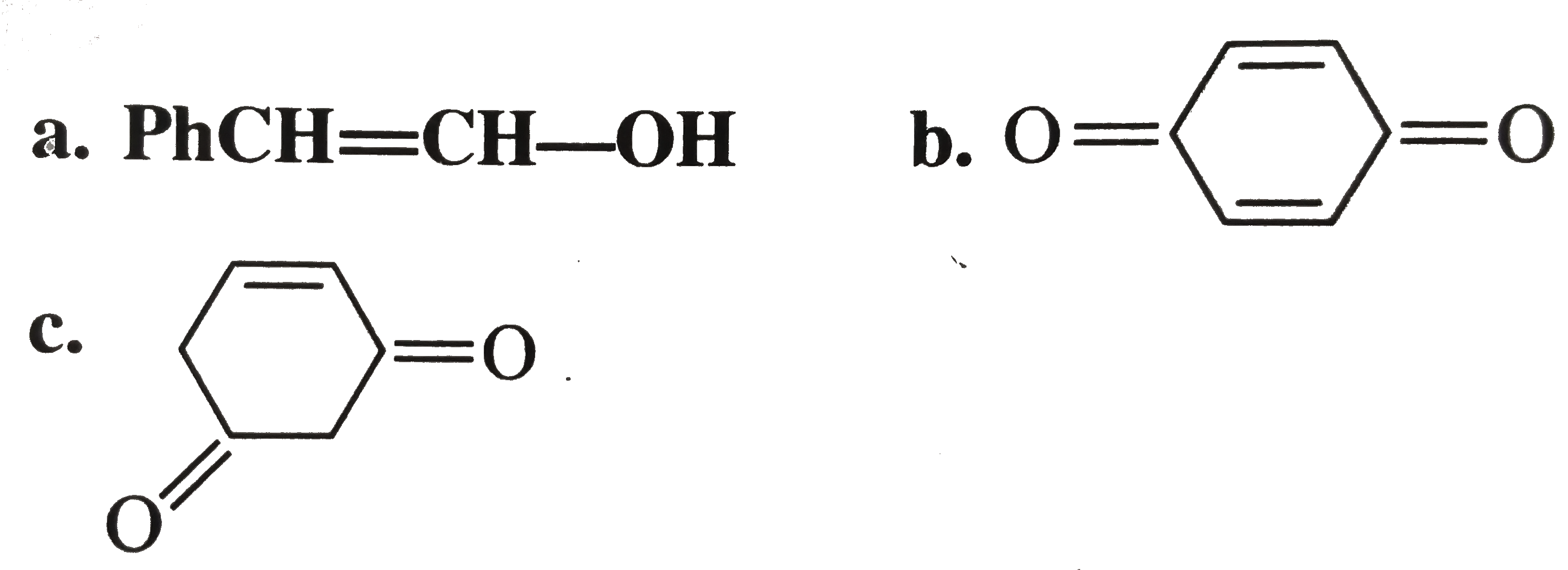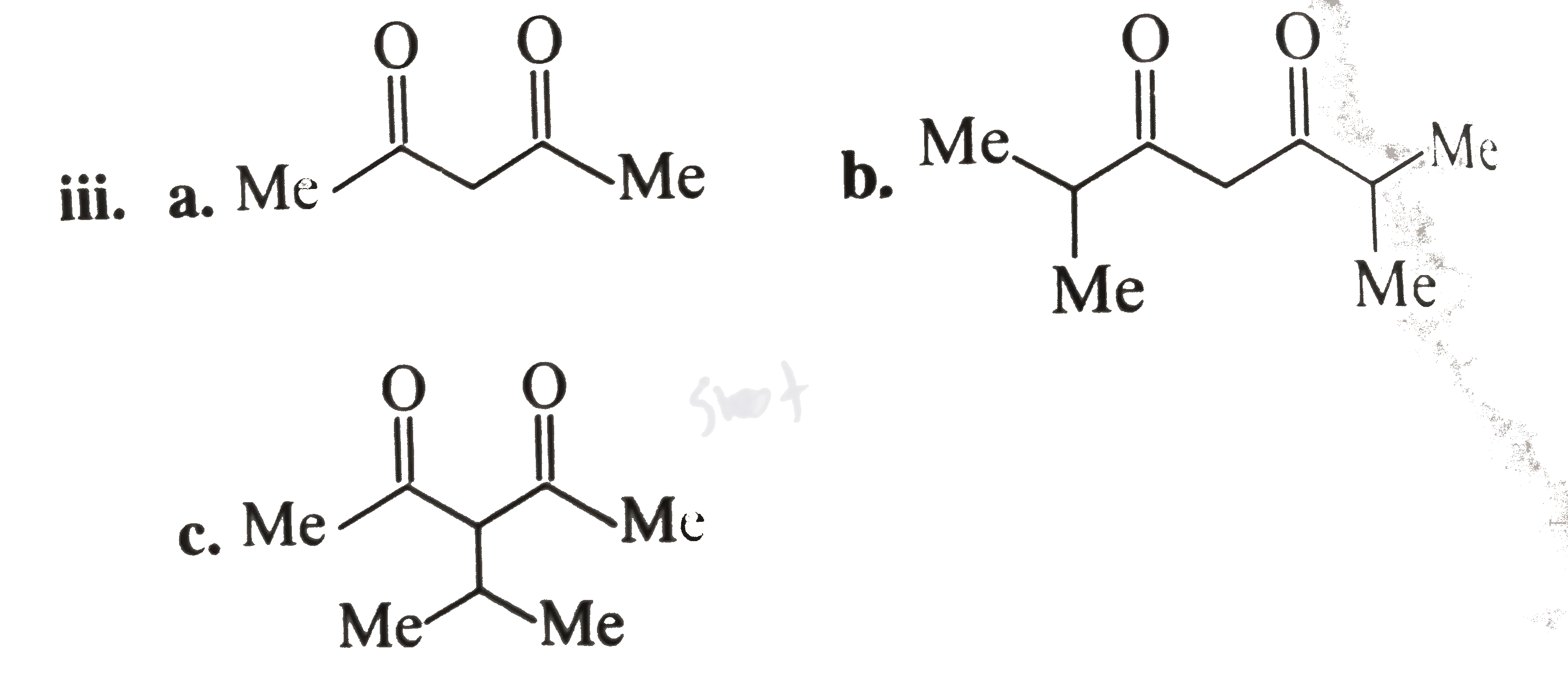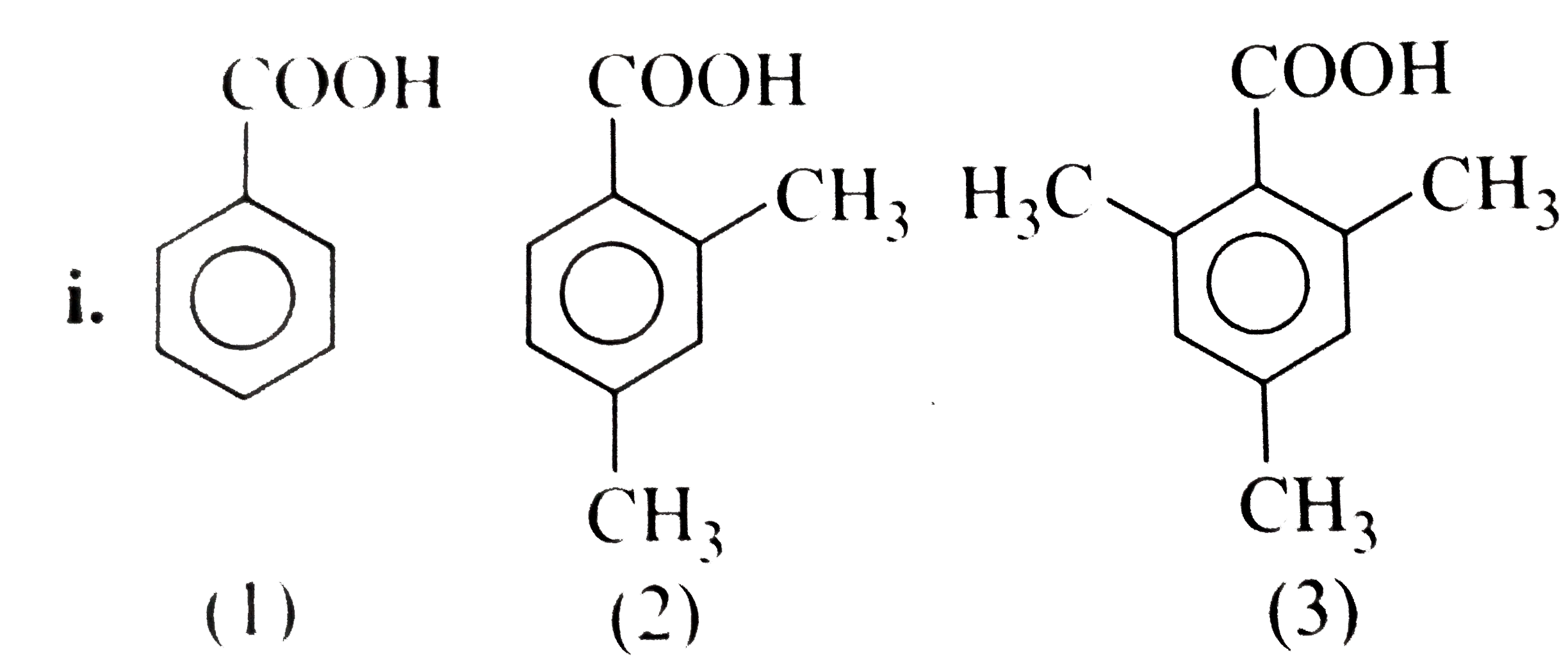Arrange the following in the increasing order of expected enol content.
i. CH3COCH2CHO
ii. CH3COCH3
iii. CH3CHO
iv. CH3COCH2COCH3
Step by step video, text & image solution for Arrange the following in the increasing order of expected enol content. i. CH_(3)COCH_(2)CHO ii. CH_(3)COCH_(3) iii. CH_(3)CHO iv. CH_(3)COCH_(2)COCH_(3) by Chemistry experts to help you in doubts & scoring excellent marks in Class 12 exams.
Updated on:21/07/2023Topper's Solved these Questions
- ALDEHYDES AND KETONESBOOK - IIT-JEE PREVIOUS YEAR (CHEMISTRY)CHAPTER - ALDEHYDES AND KETONESEXERCISE - Integer Answere Type Questions
1 Videos
- ALCOHOLS AND ETHERSBOOK - IIT-JEE PREVIOUS YEAR (CHEMISTRY)CHAPTER - ALCOHOLS AND ETHERSEXERCISE - Test
5 Videos
- ALIPHATIC COMPOUNDS CONTAINING NITROGENBOOK - IIT-JEE PREVIOUS YEAR (CHEMISTRY)CHAPTER - ALIPHATIC COMPOUNDS CONTAINING NITROGENEXERCISE - chpter test
1 Videos
Similar Questions
Keto-enol tautomerism is observed in :
(i) a.PhCHO , b.PhCOCH3
c. PhCOPh , d. PhCOCH2COCH3

(II) Arrange the following in the decreasing order of enol content:
(i) a.CH3COCH2CHO , b. CH3COCH3
c. CH3CHO , d. CH3COCH2COCH3
(ii) a. CH2(COOEt)2 (Diethyl malonate)
b. CH3COCH2COOEt(EAA)
c. CH3COCH2COCH3
d. PhCOCH2COCH3

(III) Give the decreasing order of enol content of ethyl acetoacetate in the following solvents:
a. Water b. Methanol
c. Benzene d. Acetone
View SolutionArrange the following in decreasing order of nucleophilic addition
CH3CHO,CH3COCH3,HCHO,C2H5COCH3
View Solution
Knowledge Check
Arrange the following compounds in decreasing orders of rate of hydration.
(X)CCl3CHO (Y)CH3CHO (Z)CH3COCH3 (W)CF3CHOAW gt Z gt X gt YBW gt X gt Y gt ZCW gt Y gt Z gt XDW gt Z gt Y gt X
Arrange the following compounds in increasing order of their property as indicated:
(i) CH3COCH3,C6H5COCH3,CH3CHO
(ii) Cl−CH2−COOH,F−CH2−COOH,CH3−COOH (acidic character)
View Solutiona. Acid halides, anhydrides, esters and amides, all of them contain (C=O) group but none of them gives test for (C=O) group, i.e., they do not form oximes, hydrazones, and DNP derivatives, etc. Why?
b. Arrange the following in the decreasing order of nucleophilic addition.
i. (1)−CHO
(2)−COCH3
(3)−COOH
(4)−COCI
(5)−CONH2
(6)−COOCH3
(7)−COOΘ
ii. (1)CH3CHO
(2)CH3COCH3
(3)HCHO
(4)CH2H5CH2COCH3
iii. (1)CH3COCH3
(2)C6H5COCH3
(3)C6H5COC6H5
(4)C6H5CH2COCH3
iv. (1)C6H5CHO
(2)ρ−CH3.C6H4.CHO
(3)ρ−OH.C6H4.CHO
(4)ρ−NO2.C6H4.CHO
(5)ρ−CI.C6H4.CHO
v. (1)HCHO
(2)CH3CHO
(3)CH3COCH3
(4)CI3CCHO
c. Arrange the following in the increasing order of ease of hydrolysis.
(1)CCH3COOC2H5
(2)CH3COCI
(3)(CH3CO)2O
(4)CH3CONH2
d. Arrange the following in the increasing order of ease of acid-catalysed esterification of:
i.
ii. (1)CH3CH2COOH
(2)(CH3)2CHCOOH
(3)(CH3)3CCOOH
iii. (1)CH3CH2CH2OH
(2)CH3CHOHC2H5
(3)(CH3)2C(OH)C2H5
e. Arrange the following esters in decresing order of ease of alkaline hydrolysis.
i. (1)HCOOCH3
(2)CH3COOCH3
(3)(CH3)3CCOOCH3
(4)(CH3)2CHCOOCH3
ii. (1)CH3COOCH3
(2)CH3COOC(CH3)3
(3)CH3COOCH(CH3)2
(4)CH3COOCH2CH3
iii. (1)C6H5COOCH3
(2)ρ−CH3O−C6H4−CCOOCH3
(3)ρ−NO2−C6H4−COOCH3
(4)ρ−Cl−C6H4−COOCH3
View SolutionArrange the following in order of increasing reactivity towards nucleophilic addition reactions
C6H5COCH3,CH3CHO,CH3COCH3.
View SolutionArrange the following in the decreasing order of their reactivity towards nucleophilic addition reaction :
HCHO,CH3COCH3,CH3CHO
View SolutionArrange the following compounds in increasing order of their boilnig points:
CH3CH2CH2CH2OH,CH3CH2COCH3,CH3CH2OCH2CH3.
View SolutionArrange the following in the order of their incresing reactivity towards HCN:
CH3CHO,CH3COCH3,HCHO,C2H5COCH3
View SolutionArrange the following in the order of their incresing reactivity towards HCN:
CH3CHO,CH3COCH3,HCHO,C2H5COCH3
View Solution
